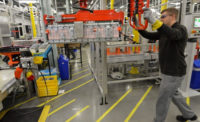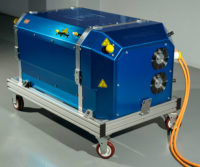As automakers and suppliers develop new types of EV batteries and fuel cell systems, the need for efficient and well-integrated automotive test cells is booming. The complex systems require the integration of intricate components that vary based on the type of testing.
Electrification test facilities require battery simulators and emulators, chassis or power train dynamometers, and high-voltage charging systems. More traditional internal combustion engines have their own requirements, such as exhaust systems, fuel systems and emissions analysis equipment.
No matter the type of test cell, these components must work together seamlessly to ensure accurate and reliable testing of vehicles and their parts. This is where system integrators come in.
Without the involvement of system integrators, the construction of an automotive test cell would be a daunting and risky task, with the potential for costly errors and delays. Integrators possess the technical expertise and knowledge necessary to plan, design and construct a cohesive and functional system and facility that addresses testing goals from all involved parties and stake holders.
They also play a critical role in ensuring the safety and compliance of the test cell, as well as optimizing its performance and efficiency. Identifying the right system integrator is vital to the success of any automotive test cell project.
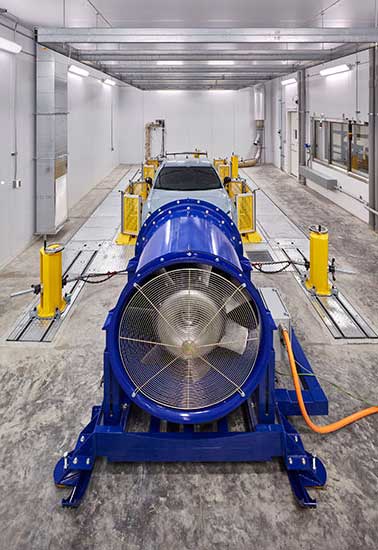
By leveraging a system integrator’s knowledge, it’s possible to mitigate risks and address future solutions in the planning and design phase. Photo courtesy ACS Inc.
Mistakes to Avoid
When it comes to the construction of automotive test cells, missteps cost time, money and efficiency. To combat this, the first step for engineers is to understand those risks and common mistakes before tackling the project.
Misstep No. 1: Misaligned stakeholder goals. When facility engineers, automotive engineers and business leaders come together to plan a new facility project, they each have a different focus as the foundation of planning. Naturally, a facility engineer is likely to prioritize and focus on the building and facility systems, while automotive test engineers are first focused on the test materials and equipment, and organizational leaders are looking to market trends and opportunities.
Despite their considerable knowledge and experience, these distinctly different approaches to planning, designing and building a test facility can make managing a new project a challenge and even hinder the overall vision. Without a united approach that captures the big picture, the potential facility limitations may include test cell capabilities and inefficient workflows, eventually contributing to falling behind industry competitors and missed opportunities for market share.
Misstep No. 2: Blind spots about new opportunities. Facility managers and other organizational decision-makers may be unaware of newer comprehensive technologies that offer more functional methods to plan, design, budget and construct a test cell or facility. While test engineers have comprehensive know-how of their existing test cells, they may not be aware of other marketplace options and different industry approaches that improve efficiency, increase throughput or capture better data.
Business leaders may have market knowledge, but less technical knowledge of the specific requirements of testing. Lack of integration of all systems within the facility can result in an increase in the length of the project schedule, higher costs due to redesign efforts or added scope to contractors. It can also limit testing capability because a critical function or design requirement was missed.
Mistake No. 3: Lack of a project champion. By starting with the fundamental requirements the organization is trying to meet through testing, it’s possible to define a facility that is right sized to address all testing goals efficiently and successfully. That said, planning and designing a well-defined facility doesn’t mean every piece is going to fit together without a hitch when it comes to procurement, construction, commissioning and acceptance testing.
Ensuring that all critical elements of the facility and automotive test cell are integrated seamlessly is a demanding, full-time commitment. The task of test cell integration commonly falls to an engineer or facility manager to complete, which is a massive undertaking in addition to their primary day jobs. Working with a dedicated systems integrator is often a better alternative.
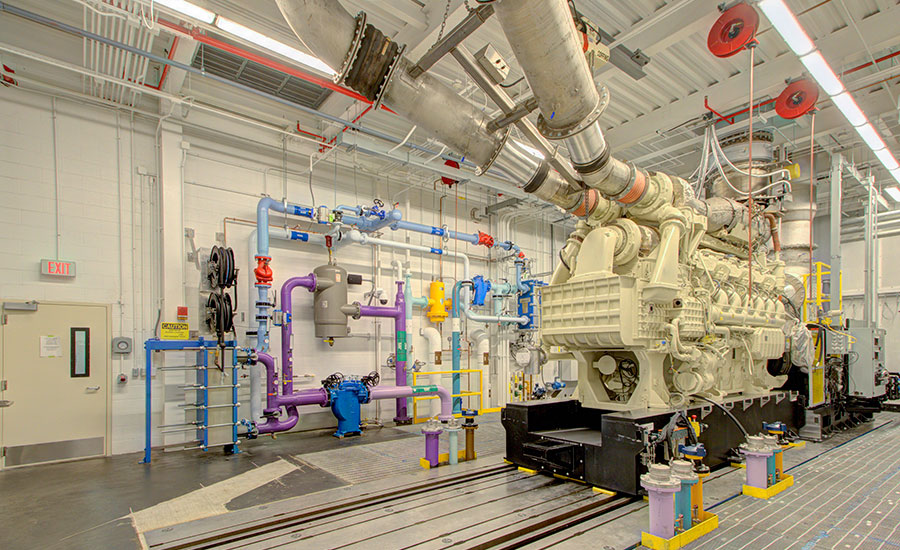
System integrators can provide insight into alternatives that may produce quicker or better data and results than previous testing protocols. Photo courtesy ACS Inc.
Test Cells Demand an Integrator
System integrators are valuable across many industries, but are especially relevant to automotive test cells due to the degree of precision and in-depth knowledge these systems demand. They help manufacturers gain a competitive advantage, improve efficiency, save time and money, and make better use of data to drive growth and innovation.
For a well-planned and cost-effective new test cell, it’s vital to have a system integrator that possesses a knowledge base of the intricacies of the design and procurement process and integration of facility, equipment and control systems. Their expertise balances the highly technical side of a test cell project with the bird’s eye view of managing a network of executives, engineers, builders and suppliers.
With this widespread network, it’s the systems integrator’s role to keep visions aligned, especially as inevitable changes occur. For example, if a supplier’s materials have changed, the systems integrator can envision how new material will affect the component, the input and output of that component, the systems surrounding it, and the test itself, on top of costs, risks and industry standards.
Even better, they communicate what that impact looks like to stakeholders from the executive to the engineer, with the language and focus that resonates with each party. To address this, a system integrator develops a facility interface specification that details all connections that interact with the test cell, such as plumbing, electrical, exhaust or acoustics. From there, it’s vital to fully define the division of responsibility so all involved parties understand who is doing what and to what standards.
Typically, an integrator will be on the cutting edge of technology and be able to provide insight into alternatives that may produce quicker or better data and results than previous protocols. Today’s technological advancements are moving so fast, it’s not uncommon for significant changes to be overlooked without a systems integrator. For example, something that used to have a manual control might become remote, resulting in the dilemma of how to run a necessary cable from one location to another so that it doesn’t cause interference with the signal.
By leveraging a system integrator’s knowledge, it’s possible to mitigate risks and address future solutions in the planning and design phase rather than during construction. Transferring that knowledge to the site engineers and executives is just as important, so after the system integrator leaves the site, the organization is supported to maintain and plan inevitable modifications when needs and technologies evolve.
Measuring the success of systems integration is just as complex as its systems. But, various benefits include improved time to utilization by making test cells and facilities operational sooner, cost savings by minimizing redesign or rework during the construction phase, and, most importantly, improved data quality for testing.
Consider, for example, a renovation to a manufacturer’s battery abuse test cell to expand battery testing capabilities. Using a systems integrator, the manufacturer was able to plan, design and build a 15,000-square-foot applications engineering lab to boost capabilities for testing components of bigger battery cells and modules consistently, safely and repeatedly.
The test cell upgrades serve as the foundation for the ongoing expansion of battery testing volume and capabilities for the company. With this renovation, this global manufacturer experienced an increased market share in e-mobility and other growing market segments.
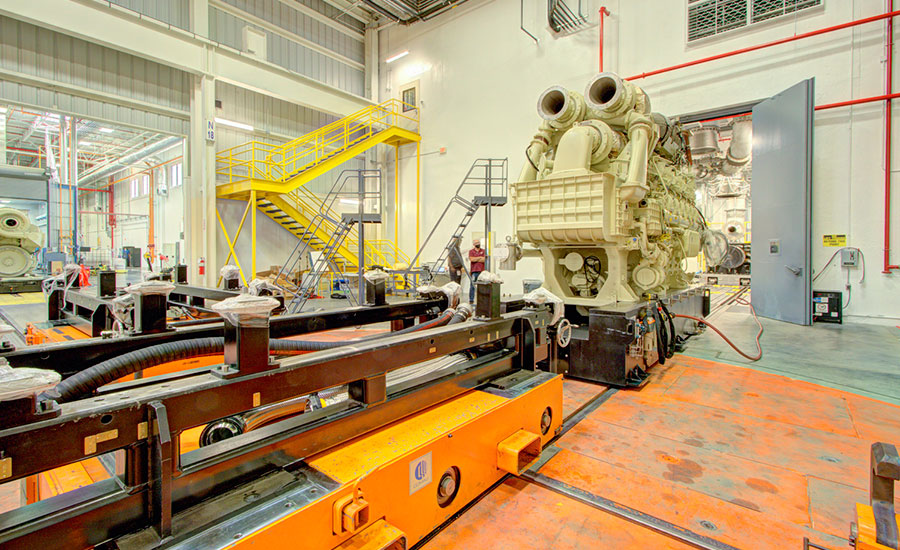
Integrators possess the technical expertise and knowledge necessary to plan, design and construct a cohesive and functional test facility. Photo courtesy ACS Inc.
Four Requirements
Identifying the need for a systems integrator is an important first step, but integration is as complex as the systems within it. There’s no one-size-fits-all integrator. It’s essential to strategically zone in on the right systems integrator for the project at hand by defining a clear vision from the start.
There are four essential requirements when first tackling the task:
- A well-defined systems integration role for the project. There isn’t just one type of systems integrator. It’s important to clearly define a need across facility integrators, systems and equipment integrators, and machine integrators. An organization that clearly defines its testing goals can better align those goals with a qualified systems integrator that has the relevant expertise and hands-on experience in the industry.
- Thorough focus on the planning and design stage. Most missteps that occur when constructing a new test cell can be avoided by thorough planning in the early stages. A systems integrator has the experience and holistic knowledge of the entire project to effectively plan and design based on budget, scope and schedule to meet industry standards and overall testing goals.
-
All-inclusive communication to achieve alignment across all stakeholders. Successful system integrators garner involvement and insights from all involved parties, from the C-suite to the engineer, and from the supplier to the construction team. They can translate and effectively communicate needs and requirements across the organization and beyond it.
For instance, while mechanical engineers may be great at their trade, they may not have in-depth knowledge of control systems, and the same can be said about controls engineers regarding mechanical systems. The systems integrator acts as the bridge between varying perspectives and priorities. If a piece of equipment is interfacing poorly with current software, for example, a systems integrator might understand which software would successfully interface across all equipment and controls, not just for the time being, but future-proofed for coming years. That big-picture point of view can help troubleshoot those challenges at the planning and design stage to mitigate issues before they arise. -
Commitment to knowledge transfer. A job isn’t complete until the handover is successful, which means a systems integrator must successfully negotiate knowledge transfer with any and all users who require information that is useful or critical for the operation and maintenance of the system once the manufacturer has left the scene.
This core knowledge transfer often occurs in the form of an operations and maintenance manual, but that’s the last step in the process. Hands-on experience and communication with end users are essential at all stages of the process so the design and build can benefit from their direct input.
The Glue Holding Everything Together
The importance of selecting the right systems integrator cannot be overstated when it comes to the planning, design and construction of a new automotive test cell and facility.
A skilled and experienced integrator can ensure that the various components of the test cell and facility are integrated seamlessly, resulting in a successful testing process and reliable data to support research and development. Think of the systems integrator as the glue that holds all the moving parts of facility construction together.
It’s important to conduct thorough research and evaluation when selecting a systems integrator for an automotive test cell project to ensure that the right individual is chosen for the job. By doing so, manufacturers can ensure that the project will be completed on time, within budget, and to the highest standards of quality and safety.

